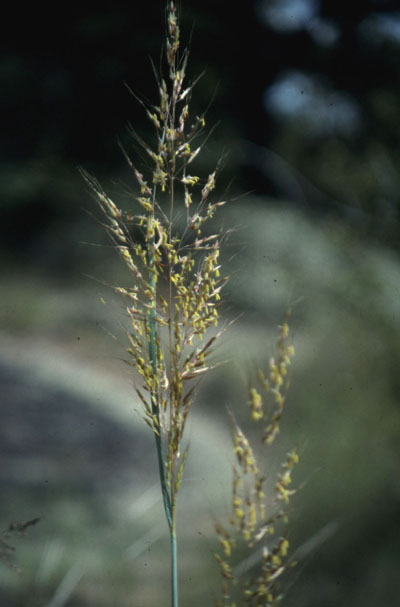 |
 |
 |
 |
Before the arrival of Europeans in North America, the central part of the continent was covered with grasslands. About one million square miles of prairie stretched from the Gulf Coast of Texas northward into Canada, and from the Rocky Mountains eastward to the temperate deciduous forests, generally east of the Mississippi River. The grasslands of central North America are divided into tallgrass prairie, mixed prairie, and shortgrass prairie. The eastern part of the prairies are dominated by tall grasses, especially big bluestem, indian grass, and switchgrass. Western, more arid prairies are dominated by short grasses such as blue grama, buffalo grass, and hairy grama. A gradual change from tall grass to short grass prairies results in areas of mixed-grass prairie, where common "midgrasses" include little bluestem, eastern gammagrass, and side-oats grama. In the mixed-grass areas, tall grasses occupy wetter areas and shortgrasses occupy drier areas. The mixed prairie was in a state of dynamic equilibrium between short and tall grasses; in dry periods, short grasses became more prevalent, and in wetter times tall grasses dominated. Many other grass species are present in the prairies, and many herbaceous plant species ("forbs") are also common. The diversity of forb species is less in the shortgrass prairies than in the tallgrass prairies.
The climate of the area occupied by prairies is, as might be expected for such a large geographic area, highly variable. However, some patterns exist. Because the area is mainly in the middle of the continent and away from the ocean, a "continental" temperate climate prevails. This is characterized by hot summers and cold winters, and by intermediate levels of precipitation, typically between 30 and 85 cm per year. The western parts of the prairies are drier than the eastern parts, and the northern parts are colder (and thus have a shorter growing season) than the southern parts. This geographic variation in climate is the primary factor that controls the distribution of tall, mixed, and shortgrass prairies.
Woody plants are rare in the prairies because of periodic fires. Fires kill the aboveground part of the woody plants, which for the most part are unable to grow back from the roots. Grasses and many forbs, in contrast, are well adapted to periodic fire, partly because much of their biomass is below ground. About 50% of the total plant biomass in a prairie is underground; this proportion is only about 10% in a deciduous forest. Fires are beneficial for prairie plants, because fire releases nutrients from dead standing biomass back into the soil, and because it prevents woody plants from dominating the landscape.
Another factor that maintained the prairie in the face of invasion of woody plants was grazing by herbivorous large mammals. Grasses are adapted to withstand periodic grazing in a variety of ways. The large proportion of underground tissue can easily regenerate aboveground stems and leaves when the latter are eaten. Many grasses bear lateral "tillers" that run along the surface or just below it, and which establish new plants without seeds. Grasses form dense mats of vegetation or "sod" in moister areas and bunches in drier areas. This growth form in part allows grasses to reproduce even when the flowering and seed producing parts have been eaten by herbivores. Finally, grasses grow from the base rather than from the tip as many other flowering plants, so that when the plants are partially eaten, they can regrow quickly.
Much less than one percent of the original prairies now exist, thanks
to agriculture. The westward migration of the population of the young United
States was driven in part by the need for farming, which resulted in the
plowing of the prairie and its conversion to croplands. While necessary
for the growth of the nation, the transformation of the prairies may be
the greatest ecological disaster to befall this continent. Prairies were
a unique, diverse ecosystem, and are now essentially extinct as functioning
communities. The remnants of the prairies that still exist in the unbroken
state are very rare and usually small. Steps have been taken to preserve
what little is left of these native prairies, by government agencies such
as the National Park Service and the U.S. Fish and Wildlife Service, by
private organizations, most notably the Nature Conservancy, and by concerned
private landowners.